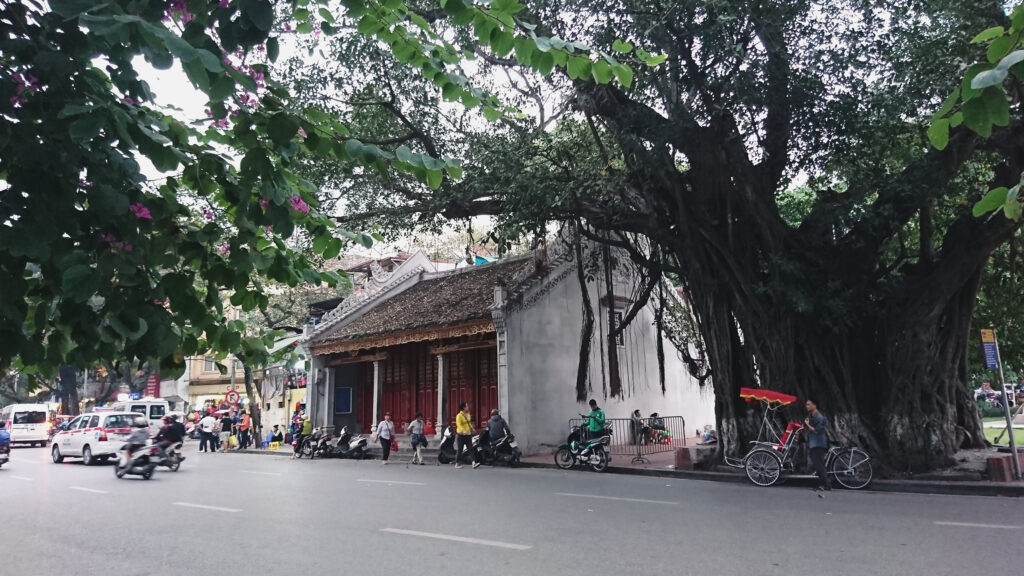[S01.2] Non-religious Spiritual space for social cohesion in Vietnam

Abstract
Chapter 1: Land and People
Chapter 2: Non- religious spiritual space within the framework of social concerns
Chapter 3: Collective- cultural memory and social cohesion
Chapter 4: Case studies
Chapter 5: Design Solution
Chapter 1. Land and People
Contemporary Vietnamese history was marked by a complex and bloody chain of political events in the 20th century which was perceived as the main trigger to the transitions in the very foundation of the society: the end of the colonial wars, the return of peace in 1975, and the economic reform which is known as Đổi Mới (Renovation) in 1986 (figure 1)

1.1 Vietnam in the pre- colonial time
In the pre-colonial time, more than eighty per cent of the Vietnamese population worked and lived on farming jobs and most of the production was for their own consumption rather than the trade. Village (làng)- a relatively enclosed community was considered as a prototype of Vietnamese society to the core but at a smaller scale. Each village was surrounded by a bamboo hedge in order to protect it from the outside world. A communal house (đình) located in the centre of the village was labelled as a spirit of the community, serving for social gatherings and spiritual practice. Due to the nature of an ancient agricultural society requiring strong coordination, family and collective values were placed in the core of the society. An individual was tied with unbreakable bonds with his clan (tộc) and family (gia đình). That is to say, familial duties and obligations were the main driver and motivation in personal life. There was no room for the individualism but collectivism in an organized and hierarchy Vietnamese social system (McLeod 2001). In this spirit, people only found themselves in the sense of unity and mutuality to their own community. From this view, outsiders (dân ngụ cư) were not welcomed in a village as they were criticized as strangers living beyond the collective values of a close-knit community. The marginalization of this group aroused a prejudice against immigration. In terms of education, the harmony in the community, particularly the strong family bonds not individual achievement was the first lesson being instilled in a child’s perception of the world. This “collectivist” social system- as the way the German social scientist Ferdinand Tonnies described: a society based on a system of common identities was built on shared physical and spiritual values (Nisbett 2003).
1.2 Vietnam in the colonial time
In 1858, French troops landed at Da Nang, marking a colonial period under the domination of French. The tutelage of French colonialism had fanned the flame of social tensions and conflicts, consequently led to resistance in several stages. During this time, the whole country was thrown into a serious disorder by the bloody strikes for the independence of the communist Vietnam Independence League (Viet Minh) against the French regime. In 1954, after being defeated at the major battle in Dien Bien Phu valley, France agreed to sign with the Democratic Republic of Vietnam (D.R.V)- founded by Viet Minh, the Geneva Accords dividing the country into two provisional military zones to North and South of Seventeenth Parallel. The proclamation of the Republic of Vietnam (R.V.N) in the South with military and economic support from the United States became an anti-communist force in order to contain the D.R.V in the North. This division broke down Vietnamese society into two extremes. Consequently, there was a massive population movement of Viet Minh cadres to the North while most Vietnamese Catholics to the South. Many people were forced to leave their homeland, separated from their families and moved to a new land with an inferiority complex about being an exclusive member of a new community. Hence, the collapse of social unity begot a diasporic generation from the obsession of bereavement and nostalgia.
In the North, the Vietnamese were bombarded with ubiquitous campaigns from the authority to propagandize for their sacrifices and martyrdom such as the “The Three Readies”:
“Ready to join the arm forces, to fight and to fight well
Ready to overcome difficulties and step up work production and studying
Ready to go anywhere and do anything required by the Fatherland.”
or “Three Builds and Two Antis”:
“ Build up working attitude, respect and good behaviour
Anti-theft and unwholesome behaviour in boy-girl relations.”
(Templer 1999)
Meanwhile, in South Vietnam, R.V.N invoked American pop culture as a spiritual weapon to distract public attention from political troubles. However, the war was an undeniable presence and the perception of this reality with a uselessness was afterwards interpreted as a melancholy phenomenon in the middle-class youth in Saigon.
In general, the generation who were born before 1975 from both sides was suffered from the uncertainties and the spectre of death as an essential part of daily life. Human life became ephemeral and the sense of being an appendage of a larger entity was appeared to be the safe harbour for the soul as giving them lofty and realistic targets to aim for.
